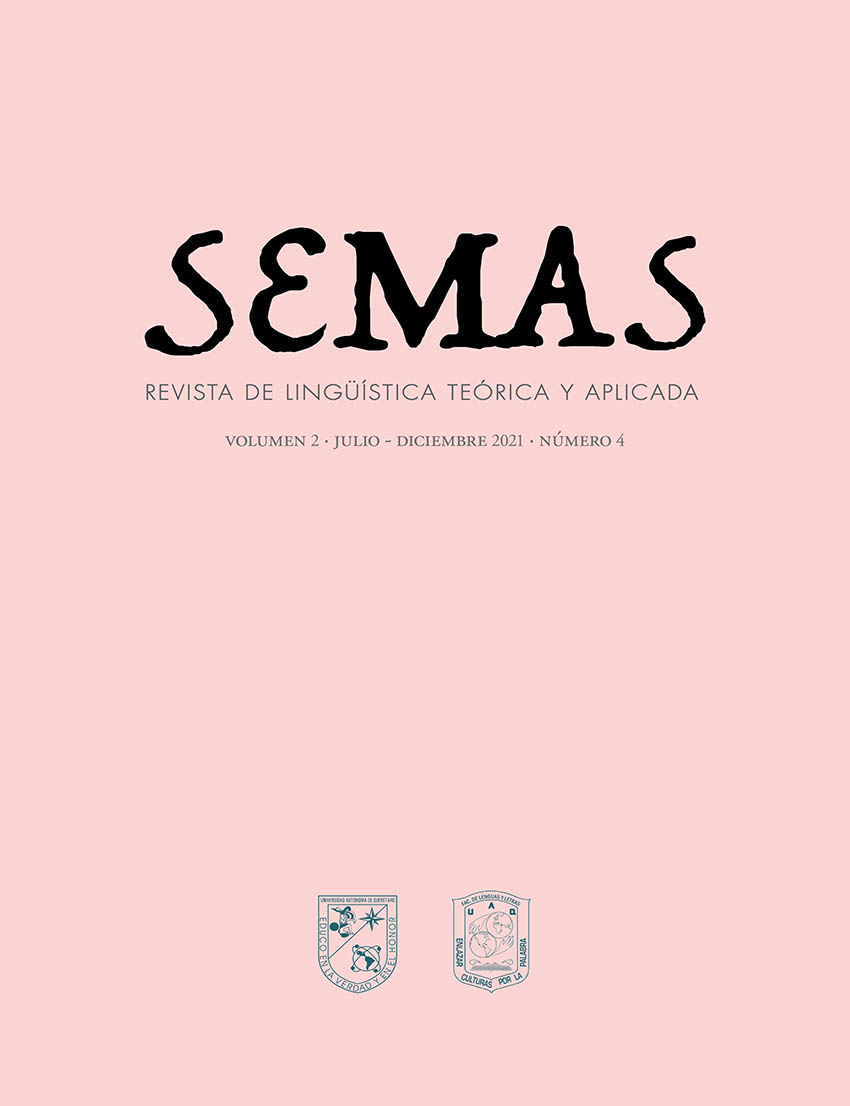Abstract
The main question in Linguistic Relativism studies is whether our language in-fluences the way we think. There is a wide variety of approaches towards Linguistic Relativism; therefore, this work will be carried out within the “Structure-centered approach” (Lucy, 1997). The aim of this study is to investigate whether the number marking in Maya (with numeral classifiers) and in Spanish (without numeral classi-fiers) conduct cognitive effects in Maya-Spanish bilingual children when they perform a non-verbal task of object classification. The result shows that all the children in the study preserve the “Maya cognitive pattern”, observed in the selection of objects based on their material. Bilinguals in particular show flexible cognition, observed in the differences in material selection determined by linguistic context of the task.

This work is licensed under a Creative Commons Attribution 4.0 International License.
Copyright (c) 2021 Semas

